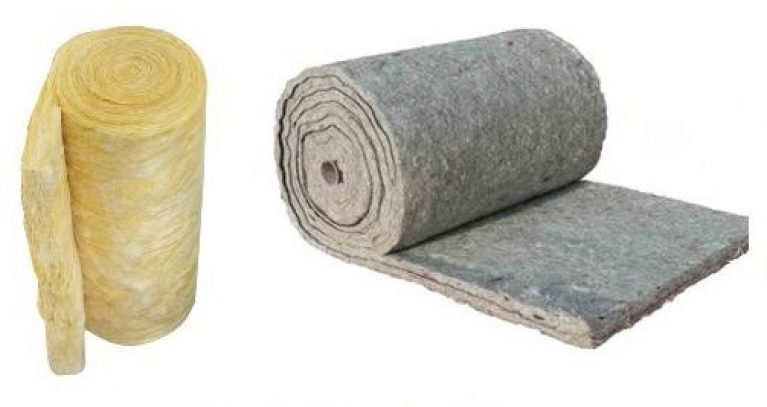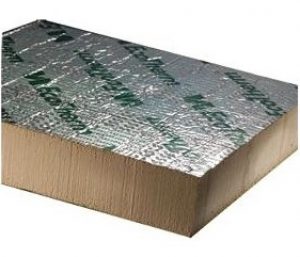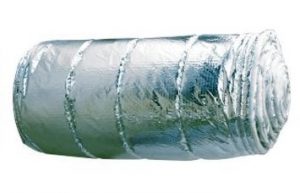What are the different types of roof insulation?

Everyone knows that within your property you need insulation to help regulate and maintain the temperature. However, how do you know which is the best insulation for your property and what are the benefits or drawbacks of different insulation options?
In this Wonkee Donkee guide, our experts explain what are the different types of roof insulation and how to make the right choice for your property.
What do you need to consider when choosing roof insulation?
Choosing the right insulation for your roof is unfortunately not as simple as picking an option and running with it. There are many different things that you need to consider from which is the best insulator for the style of roof, the thermal requirements of the property, abide by regulations such as energy codes and meet the terms of insurance providers. In addition, the practical aspects such as ease of installation and how easy it is to remove in order to complete repair jobs on the roof if necessary should also be considered. Cost is also another consideration. However, you will need to think of both the short term and long term costs of different insulation options and make an educated decision based on this information. Some insulation is cheap to purchase and install which is great in the short term.
On the other hand, they may not provide an adequate layer of thermal protection to your home. This means that in the long term, you will end up paying higher utility bills as your property will be less effective at retaining heat. Other insulation may be more expensive initially but the extra thermal efficiency can save you a great deal in the long term through reduced utility bills.
What are the different types of roof insulation?
There are many different types of roof insulation available on the market. In this next section, we discuss the benefits and drawbacks of some traditional types of roof insulation.
Quilt/Cavity Batt

When you think of roof insulation, then the first thing that you picture in your mind is most likely to be a quilt or cavity batt insulation. This insulation is made out of mineral or fibreglass wool and used to be manufactured into large rolls. However, as this insulation is used for cold roofs and comes pre-cut to fit in between the roofs rafter.
You can purchase quilt or cavity batt insulation in many different thicknesses, but the most commonly available sizes are 420mm or 580mm. The pre-cut sizes make for easy and quick installation with only minimal extra cutting required. You can always cut up these sections in order to fit the smaller unique sections around the outside of the roof.
Quilt or batt insulation is effective as it fills in the gaps between the rafter which prevents heat from escaping. However, as it sits in between the rafters, there tend to be weak spots around the rafters as well as the rafters themselves where heat could escape. This is why this type of insulation requires proper insulation in order to be as effective as possible.
It also comes in different efficiency ratings. The level of efficiency is calculated using the R-value and when purchasing batt insulation this will clearly be displayed. Although it may seem confusing to figure out with R-value batt insulation you should use for your property, your local building regulations will require a minimum rating to meet standards.
This is always a good place to start and helps ensure that the work you are carrying out also abides by your insurance policy. The R-value is also dependent on the quality of the installation. If you poorly install batt insulation by packing it or compressing it between rafters you will not achieve the full efficiency. This is why it is important to get your roof insulated by a professional or with the help of an experienced DIY’er.
Batt cavity insulation can also be installed anywhere from walls, floor and attics. However, this versatility doesn’t mean that you should use batt insulation everywhere. At Wonkee Donkee, we suggest that you research each location on its own merit as other options such as spray foam or blown-in insulation may be a more appropriate choice.
Roof Insulation Boards

Another commonly used type of roof insulation is the roof insulation board. These are manufactured using many different types of materials although the characteristics of each different finished product are fairly similar.
The first type of material used in insulation boars is expanded polystyrene. This is exactly what you think of when you hear polystyrene and it is the same as disposable coffee cups or what is widely used in the packing industry. The only difference is in how tightly it is compacted together. These expanded polystyrene boards provide an R-value of 4 for every inch of thickness which is a reasonable level of thermal protection. Typically, they are used for wall insulation as well as roof insulation. One key advantage of using expanded polystyrene insulation boards is that they are the most affordable insulation board available on the market.
The second material used for insulation roof boards is extruded polystyrene. These are much more commonly seen especially in building merchants and other insulation selling stores. You may recognise these by their distinctive blue or pink panels which come in a range of different thicknesses. When it comes to cost, it is the middle of the road for insulation boards as it is denser than expanded polystyrene with a higher R-Value of 5 per inch of thickness.
The third and most expensive roof insulation boards included on this list are made from polyisocyanurate. As you would expect, these are more expensive as they are again ore compact and provide an R-Value of 6 per inch of thickness. Top of the range polyisocyanurate insulation boards come with added features such as foil layers to help deflect heat. They are typically used for buildings which lose a lot of heat through the roof and their high thermal efficiency can make the initial cost can be turned into long-term saving.
There are many reasons why using roof insulation boards are favoured with the main advantage being how simple they are to install. You simply purchase the boards pre-cut and lay them down side by side in order to provide a good covering of insulation to your roof. This makes the installation process extremely quick especially if you are working on a flat roof with a big surface area.
Another advantage is the thickness and the compact manufacturing of the boards. This provides them with a high level of thermal efficiency whilst also being considerably narrower than other insulation options. This not only saves space in large roofs and attics but also makes it great for use in small roof spaces where the cavity for insulation is small.
The materials used to manufacture the board also have properties that help prevent penetration of water vapour into the roof space and reaching the roof structure. IT is again the density of the board which provides a vapour barrier which prevents water vapour in the air entering the insulation or the roof space.
Finally, the condensed nature of their manufacturing also provides the extra benefit of providing a sound barrier. This can be especially useful if you are using it as insulation in different parts of the house or if your roof space can be walked upon. This extra soundproofing allows for an extra barrier so that noises are minimised and are less likely to be disruptive.
Multi-Foil

The first thing that we should note when we are talking about multi-foil in relation to roof insulation is that it is typically used in conjunction with another type of insulation such as boards or quilts. The reason for this is that multi-foils best characteristic is the vapour layer that prevents water vapour from passing. This is why it is used under or above other types of insulation in order to create a barrier and stop a build-up of moisture within the insulation itself or the roof space.
Saying this, multi-foil does also provide its only thermal protection, keeping heat within the property. It is also extremely thin which makes it great for use in smaller roof spaces or for an extra layer to add for extra protection against moisture for other insulation options.
Another benefit to multifoil is that it is very versatile in its use. It can not only be used in roofing but also for walls and floors. In addition, it requires minimal maintenance and has an extremely high life expectancy of up to 50 years.






